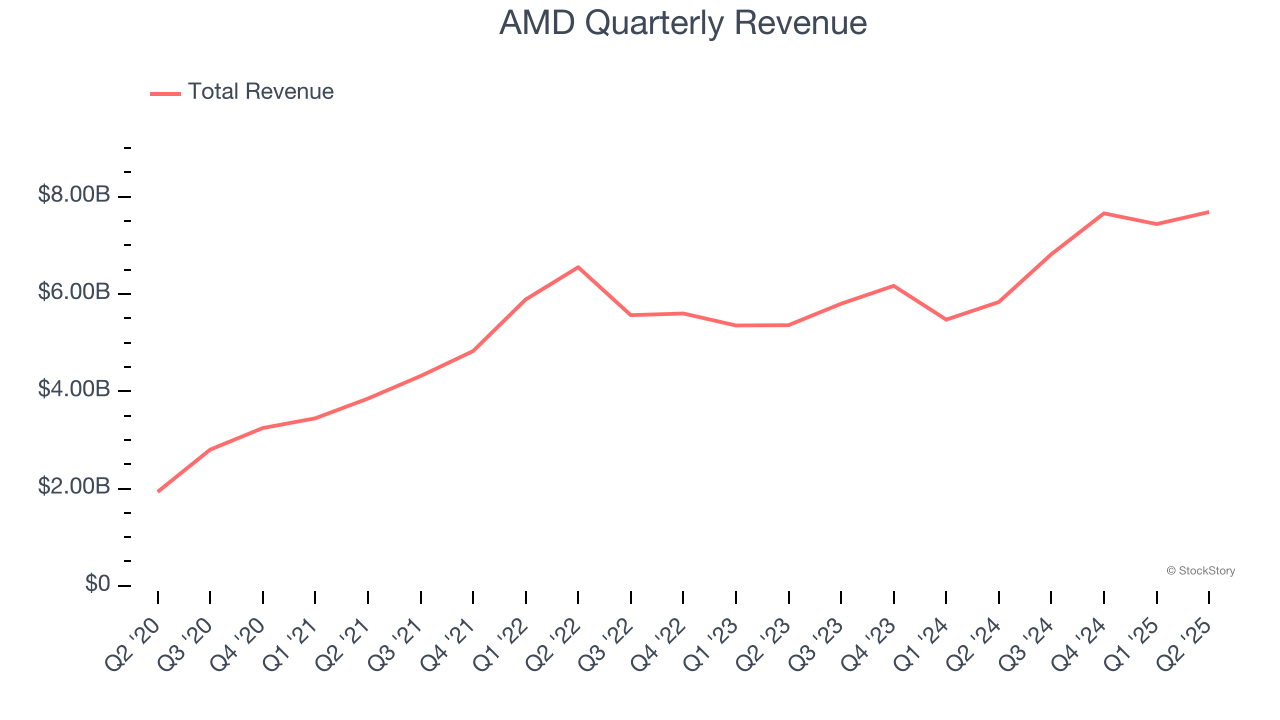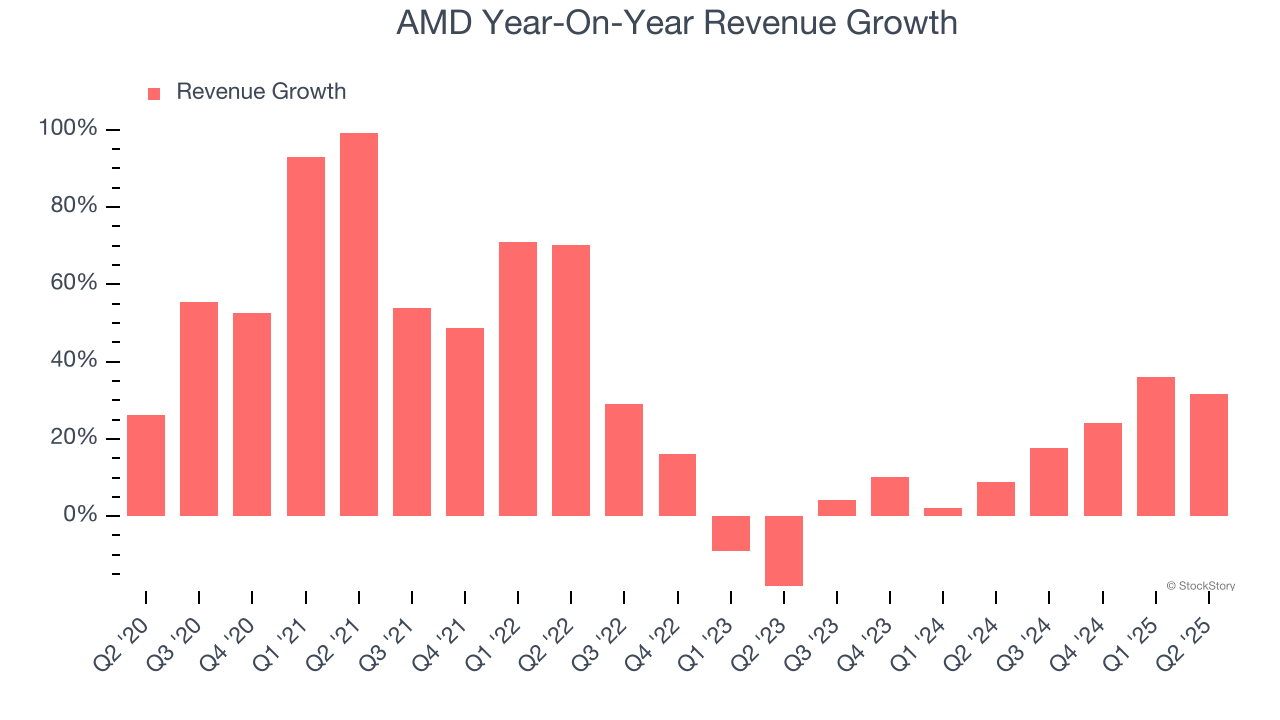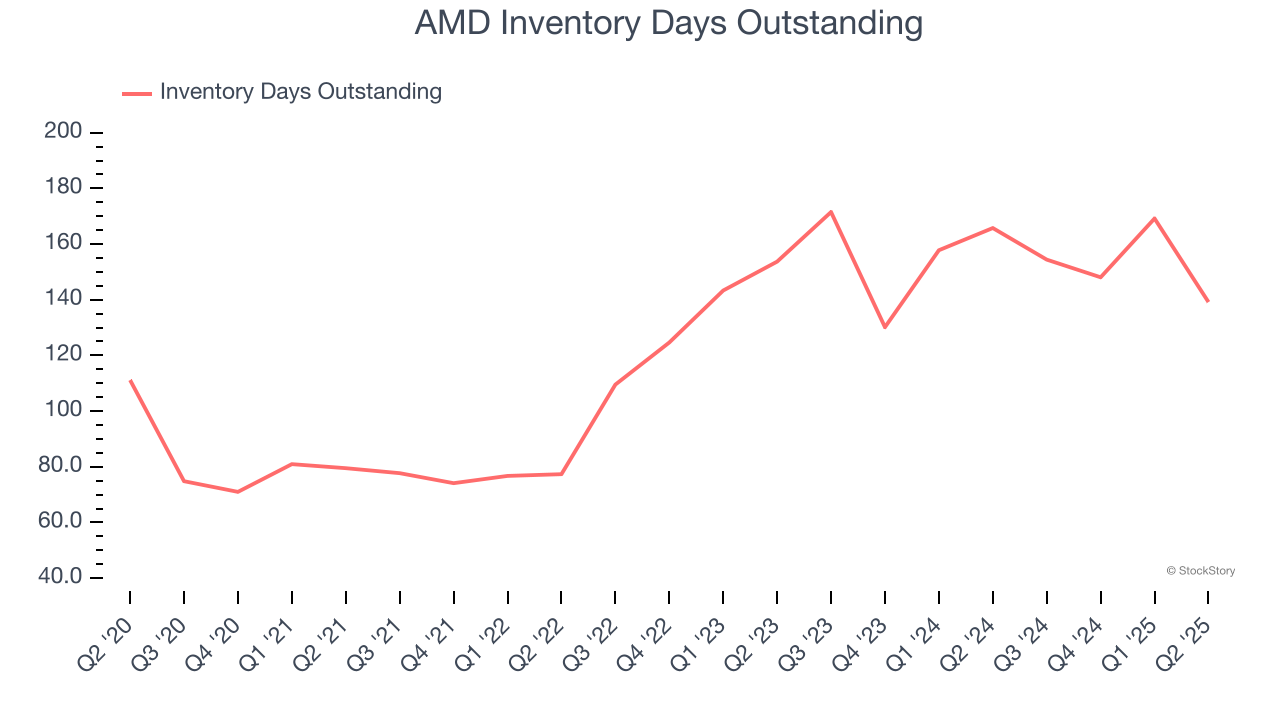
Computer processor maker AMD (NASDAQ: AMD) reported Q2 CY2025 results topping the market’s revenue expectations, with sales up 31.7% year on year to $7.69 billion. On top of that, next quarter’s revenue guidance ($8.7 billion at the midpoint) was surprisingly good and 5.1% above what analysts were expecting. Its non-GAAP profit of $0.48 per share was in line with analysts’ consensus estimates.
Is now the time to buy AMD? Find out by accessing our full research report, it’s free.
AMD (AMD) Q2 CY2025 Highlights:
- Revenue: $7.69 billion vs analyst estimates of $7.43 billion (31.7% year-on-year growth, 3.4% beat)
- Adjusted EPS: $0.48 vs analyst estimates of $0.48 (in line)
- Adjusted EBITDA: $1.09 billion vs analyst estimates of $693 million (14.2% margin, 57% beat)
- Revenue Guidance for Q3 CY2025 is $8.7 billion at the midpoint, above analyst estimates of $8.28 billion
- Operating Margin: -1.7%, down from 4.6% in the same quarter last year
- Free Cash Flow Margin: 15.4%, up from 7.5% in the same quarter last year
- Inventory Days Outstanding: 139, down from 169 in the previous quarter
- Market Capitalization: $286.6 billion
“We delivered strong revenue growth in the second quarter led by record server and PC processor sales,” said Dr. Lisa Su, AMD Chair and CEO.
Company Overview
Founded in 1969 by a group of former Fairchild semiconductor executives led by Jerry Sanders, Advanced Micro Devices (NASDAQ: AMD) is one of the leading designers of computer processors and graphics chips used in PCs and data centers.
Revenue Growth
A company’s long-term performance is an indicator of its overall quality. Even a bad business can shine for one or two quarters, but a top-tier one grows for years. Over the last five years, AMD grew its sales at an incredible 31.1% compounded annual growth rate. Its growth beat the average semiconductor company and shows its offerings resonate with customers, a helpful starting point for our analysis. Semiconductors are a cyclical industry, and long-term investors should be prepared for periods of high growth followed by periods of revenue contractions.

We at StockStory place the most emphasis on long-term growth, but within semiconductors, a half-decade historical view may miss new demand cycles or industry trends like AI. AMD’s annualized revenue growth of 16.3% over the last two years is below its five-year trend, but we still think the results suggest healthy demand. 
This quarter, AMD reported wonderful year-on-year revenue growth of 31.7%, and its $7.69 billion of revenue exceeded Wall Street’s estimates by 3.4%. Beyond the beat, this marks 8 straight quarters of growth, showing that the current upcycle has had a good run - a typical upcycle usually lasts 8-10 quarters. Company management is currently guiding for a 27.6% year-on-year increase in sales next quarter.
Looking further ahead, sell-side analysts expect revenue to grow 18.2% over the next 12 months, an improvement versus the last two years. This projection is eye-popping for a company of its scale and suggests its newer products and services will fuel better top-line performance.
Today’s young investors won’t have read the timeless lessons in Gorilla Game: Picking Winners In High Technology because it was written more than 20 years ago when Microsoft and Apple were first establishing their supremacy. But if we apply the same principles, then enterprise software stocks leveraging their own generative AI capabilities may well be the Gorillas of the future. So, in that spirit, we are excited to present our Special Free Report on a profitable, fast-growing enterprise software stock that is already riding the automation wave and looking to catch the generative AI next.
Product Demand & Outstanding Inventory
Days Inventory Outstanding (DIO) is an important metric for chipmakers, as it reflects a business’ capital intensity and the cyclical nature of semiconductor supply and demand. In a tight supply environment, inventories tend to be stable, allowing chipmakers to exert pricing power. Steadily increasing DIO can be a warning sign that demand is weak, and if inventories continue to rise, the company may have to downsize production.
This quarter, AMD’s DIO came in at 139, which is 20 days above its five-year average. These numbers suggest that despite the recent decrease, the company’s inventory levels are higher than what we’ve seen in the past.

Key Takeaways from AMD’s Q2 Results
We were impressed by AMD’s strong improvement in inventory levels. We were also glad its revenue guidance for next quarter exceeded Wall Street’s estimates. On the other hand, its EPS slightly missed. Overall, this print had some key positives. The market seemed to be hoping for more, and the stock traded down 1.5% to $171.79 immediately following the results.
Is AMD an attractive investment opportunity at the current price? If you’re making that decision, you should consider the bigger picture of valuation, business qualities, as well as the latest earnings. We cover that in our actionable full research report which you can read here, it’s free.





